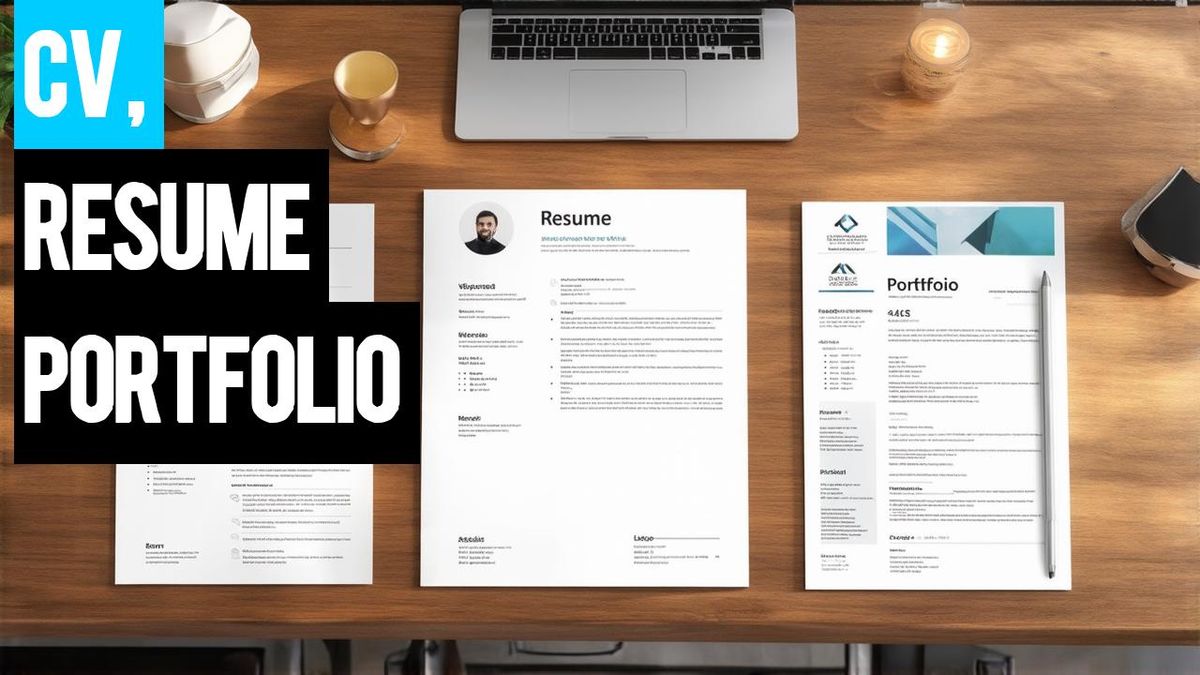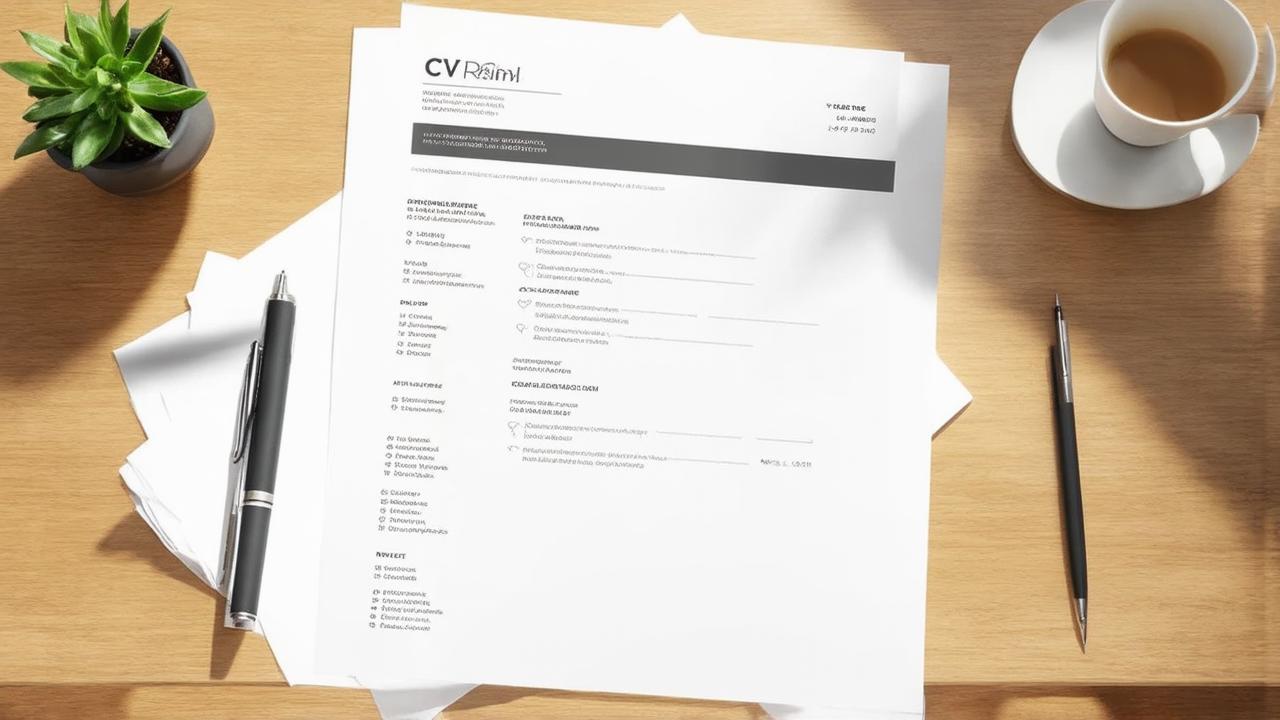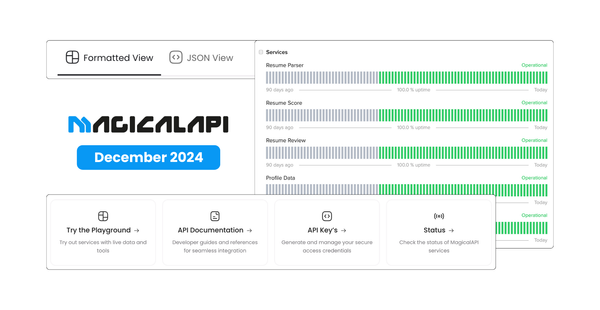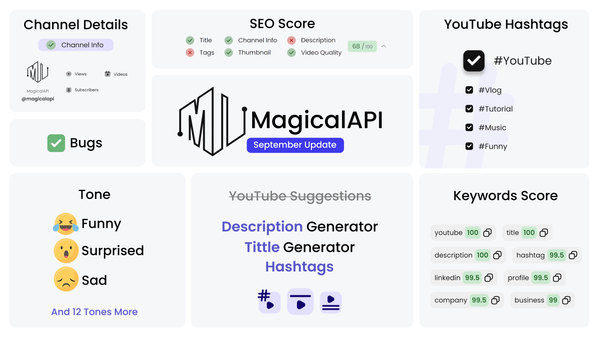CV, Resume, and Portfolio: Understanding the Key Differences
Discover the distinct differences between a CV, resume, and portfolio: from detailing academic achievements to showcasing professional skills and creative endeavors. Unravel which document suits your career path best with our comprehensive guide!

When navigating the professional world, understanding the difference between a CV, resume, and portfolio is crucial. Each of these documents serves a unique purpose in showcasing your professional background, skills, and achievements. In this blog post, we will delve into the key differences between these three essential tools and provide guidance on when to use each one.
Whether you are a fresh graduate stepping into the job market or a seasoned professional looking to switch careers, knowing how to effectively use a CV, resume, and portfolio can significantly enhance your job prospects and career growth. Let's explore these differences and learn how to optimize each one for your professional advancement.
✨ Unleash the Power of AI with MagicalAPI!
Whether you’re extracting LinkedIn data, or evaluating resumes, MagicalAPI is your one-stop solution! Discover the diverse range of AI services tailored to meet your every need. Dive in and elevate your digital experience today!

What is a Resume?
A resume is a document typically limited to one or two pages, summarizing your professional history, skills, and qualifications. It's a staple in job applications, particularly in the United States and Canada, where it's used to present a brief but impactful overview of your career journey.
In essence, a resume is designed to provide employers with a quick snapshot of your professional experience and capabilities. It typically includes sections like your contact information, a summary or objective statement, work experience, education, and relevant skills.
The art of resume writing lies in its precision and relevance, where you selectively showcase the aspects of your professional life that align with the specific requirements of a job. It's a marketing tool, with the product being your professional expertise and potential.
What Information is Commonly Included in a Resume?
A resume typically includes several key components:
- Contact Information: This includes your name, phone number, email address, and optionally, your LinkedIn profile or personal website.
- Professional Summary or Objective: A brief statement outlining your career goals and highlighting your most significant achievements, skills, and experience.
- Work Experience: Detailed descriptions of previous roles, focusing on your responsibilities and accomplishments in each position. It's important to tailor this section to the job you're applying for, emphasizing relevant experience.
- Education: Information about your academic background, including degrees, certifications, and relevant coursework or training.
- Skills: A list of skills that are pertinent to the job you are applying for, including both hard and soft skills.
- Additional Sections: Depending on the job and your background, you might also include sections for certifications, awards, publications, or volunteer work.
What is a Portfolio?
A portfolio is a collection of work that showcases your skills, creativity, and abilities, Especially in areas where showing your talent in a concrete way really matters. Unlike a resume or CV, which verbally summarizes your skills and experiences, a portfolio provides actual evidence and examples of your work. It is often used in creative professions like graphic design, writing, art, or any field where the visual demonstration of skills is beneficial.
Portfolios can be physical or, more commonly in the digital age, online formats like personal websites, digital content platforms (like Dribbble or Clippings), or even PDF documents. They typically include samples of your best work, such as photographs, design pieces, written articles, project templates, or case studies, and can be linked within your CV or resume.
What Information is Commonly Included in a Portfolio?
A portfolio is a curated collection of work that showcases your professional skills, projects, and accomplishments. Commonly included elements in a portfolio are:
- Samples of Work: This could include photographs, design pieces, written content, videos, or any other relevant work that showcases your abilities and creativity.
- Project Descriptions: Brief overviews or case studies of significant projects, outlining your role, the process, and the outcomes or results achieved.
- Awards and Recognition: Any awards, honors, or recognitions you have received related to your field.
- Testimonials or Reviews: Positive feedback from clients, colleagues, or supervisors that attest to your skills and accomplishments.
- Personal Biography or About Section: A section introducing you, your professional journey, and your areas of expertise.
- Contact Information: Clear and accessible contact details for potential clients or employers to reach you.
A portfolio, particularly in creative or technical fields, offers a visual and practical demonstration of what you can do, going beyond the verbal descriptions in a resume or CV. It is an essential tool for professionals to visually demonstrate their expertise and stand out in their industry.
What is a CV?
A CV, or Curriculum Vitae, is a comprehensive document that details your entire academic and professional history. Unlike a resume, a CV is more extensive and includes a detailed listing of your education, academic background, teaching experience, degrees, research, awards, publications, presentations, and other achievements. It is commonly used in academic, scientific, research, and medical professions.
A CV is typically longer than a resume, often extending over multiple pages, depending on the length and complexity of one's career. It serves as a complete record of your professional journey and is less tailored to specific job applications. In regions outside North America, such as Europe and Asia, CVs are commonly used even for regular job applications.
The structure of a CV is less flexible than a resume, following a chronological order and providing a detailed account of your career. It's particularly useful for individuals with a long track record of publications, presentations, and research projects.
What Information is Commonly Included in a CV?
A Curriculum Vitae (CV) is a detailed document that presents a comprehensive overview of your academic and professional achievements. Unlike a resume, a CV is more exhaustive and is commonly used in academic, research, or scientific fields. Here’s what is typically included in a CV:
- Personal Details: Your full name, contact information, and sometimes a professional title or summary.
- Educational Background: Detailed information on your academic history, including degrees, majors, thesis or dissertation topics, and notable academic achievements.
- Professional Experience: Comprehensive details of your work history, including positions held, responsibilities, achievements, and significant projects or contributions.
- Publications and Presentations: A list of any publications, articles, books, or papers you have authored or co-authored, as well as presentations or lectures given at conferences or seminars.
- Research Experience: Detailed information on research projects, including the scope of the project, your role, and any findings or conclusions.
- Awards and Honors: Any academic or professional recognitions you have received.
- Certifications and Skills: Relevant certifications, technical skills, languages spoken, and other competencies.
- Professional Affiliations: Membership in professional organizations or associations.
- References: Names and contact details of academic or professional references.
A CV differs from a resume in its level of detail and length, often extending to several pages, and is less tailored to specific job openings. In contrast to a portfolio, which is a collection of work samples, a CV provides a text-based overview of your professional life.

What are the Differences Between a Resume and a CV?
Understanding the differences between a resume and a CV (Curriculum Vitae) is crucial for professionals, as these documents serve different purposes and are used in various contexts:
- Length and Detail: A CV is typically more detailed and longer than a resume. A resume is usually limited to one or two pages and highlights skills and experiences relevant to the job being applied for. In contrast, a CV is a more comprehensive document that covers your entire career, including a complete list of your academic credentials and professional accomplishments.
- Purpose and Use: Resumes are commonly used in the United States and Canada for job applications, focusing on presenting a snapshot of your professional journey. CVs, on the other hand, are used more frequently in Europe, Asia, Africa, and the Middle East. They provide a detailed overview of your academic and professional life and are often used for academic, educational, scientific, or research positions.
- Content Focus: While both resumes and CVs include your work history and education, a CV typically goes into more depth. It includes publications, awards, honors, affiliations, and more detailed descriptions of research or academic work.
- Customization: Resumes are often tailored for each job application, highlighting specific skills and experiences that align with the job requirements. CVs, being more comprehensive, are updated less frequently and provide a complete record of your professional history.
What are the Differences Between a Resume and a Portfolio?
Understanding the differences between a resume and a portfolio is key in effectively showcasing your professional capabilities:
- Purpose and Content: A resume is a concise document that provides an overview of your skills, experiences, and qualifications, tailored to the specific job you are applying for. In contrast, a portfolio is a collection of work samples that visually demonstrate your skills and abilities, often used in creative fields.
- Format and Structure: Resumes follow a structured format, typically including sections like contact information, work experience, education, and skills. Portfolios, however, are more flexible in format, showcasing work samples like designs, articles, or projects in a way that best represents your work.
- Use in Job Applications: While a resume is a standard requirement in most job applications, a portfolio is usually supplementary, providing tangible evidence of the skills and achievements listed in your resume. It's particularly beneficial in fields where visual or creative work is critical.
- Impact on Hiring Process: A resume is often the first step in the hiring process, used to screen candidates and determine if they meet the job's qualifications. A portfolio, on the other hand, is generally used later in the process to validate and further explore a candidate's capabilities.
In summary, while resumes provide a textual overview of your qualifications and experiences, portfolios offer a visual and practical demonstration of your professional skills, especially in creative roles. Understanding the distinct roles of each can help you utilize them effectively in your job search and career development.
Conclusion:
In summary, understanding the difference between CV, resume, and portfolio is crucial for professionals navigating their career paths. A resume is a structured, concise document highlighting your skills, experiences, and qualifications. It's a universally accepted format for job applications, focusing on your professional journey in a text-based overview. On the other hand, a portfolio offers a visual and tangible demonstration of your skills, particularly valuable in creative or technical fields. It complements the resume by providing evidence of your work and capabilities through samples and projects.
- Resume: A summary of your professional qualifications, including work experience, education, and skills, tailored to the specific job you are applying for.
- Portfolio: A visual or digital collection showcasing examples of your work, demonstrating skills and abilities in a practical, tangible manner.
While a resume is necessary for most job applications, a portfolio is often a supplementary tool that enhances your application, especially in fields where the quality of work can be showcased visually. Together, they provide a comprehensive picture of your professional profile, enhancing your chances of standing out in the job market.
For those looking to perfect their job application materials, our Resume Parser service can be a valuable asset. It helps optimize your resume, ensuring it aligns with industry standards and job requirements, complementing your portfolio effectively. Consider using our service to strengthen your job applications and showcase your professional best.
FAQ
- How Do CVs and Resumes Differ?
CVs are more detailed and longer than resumes. Resumes are brief and focus on key highlights. CVs are used for academic, scientific, and research positions, while resumes are used for most other job applications. - How Can I Incorporate a Portfolio into My Job Application?
You can include a link to your portfolio in your resume or CV. This allows potential employers to view your work samples easily. - Can a Portfolio Replace a Resume?
While a portfolio can complement a resume, it typically does not replace it. However, in some cases, such as freelance or creative roles, a portfolio may be the primary document used to showcase your skills to potential clients or employers.

Join to our community
By joining our Discord server, get assistance, and troubleshoot any challenges you may encounter while using our services.
Join us on Discord




